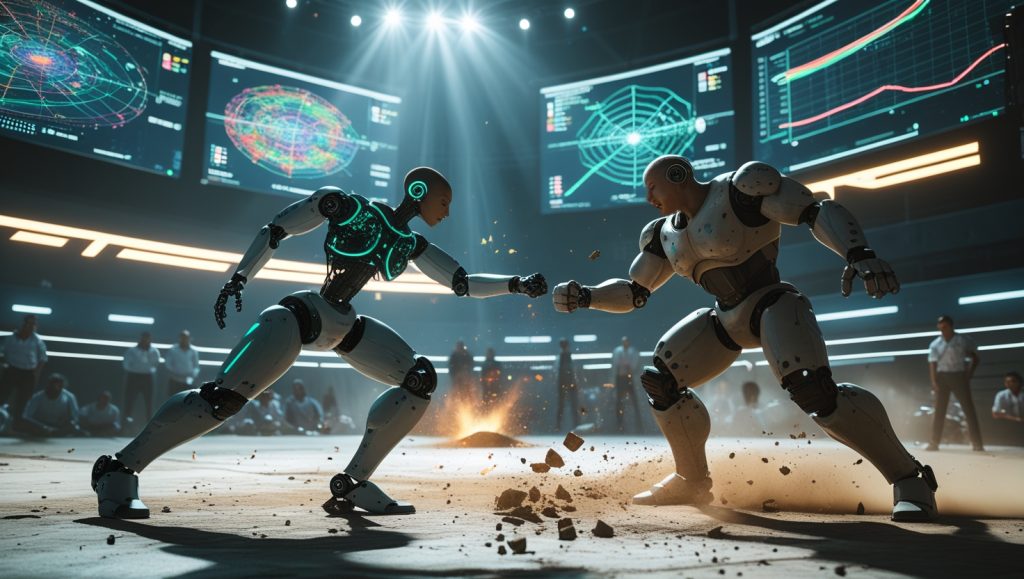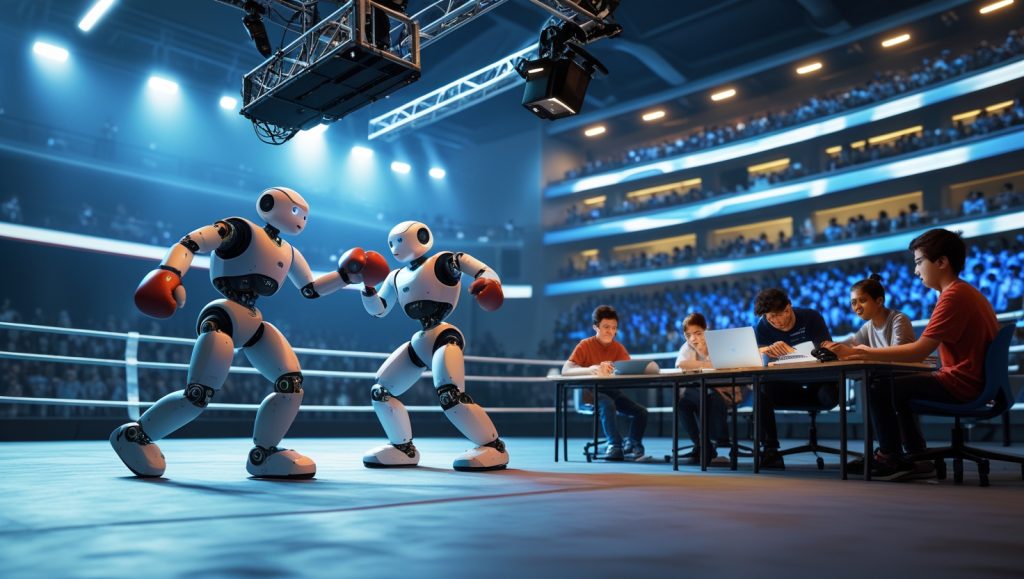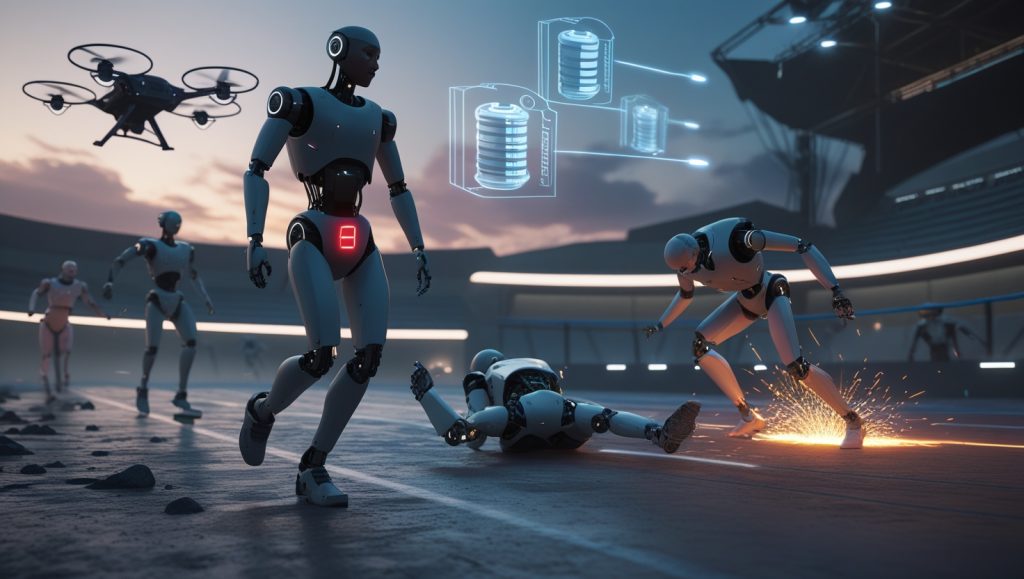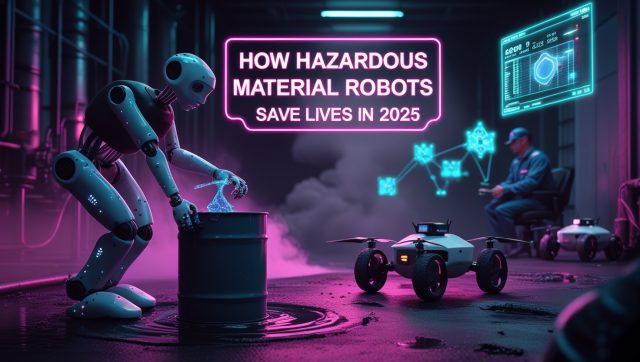What Happens When Humanoid Robots Step into the Arena?
Imagine a world where robots don’t just assist humans—they compete against each other in high-stakes combat. In 2025, this vision becomes reality as Shenzhen, China, hosts the inaugural humanoid robot combat championship, a landmark event merging advanced robotics, artificial intelligence, and global engineering prowess. Organized by EngineAI, the EngineAI Robot Free Combat: Mecha King tournament represents more than entertainment; it’s a catalyst for redefining how robots interact with unpredictable environments and human society.
Let’s explore the technical, economic, and cultural significance of this event, examining its potential to accelerate AI breakthroughs, inspire STEM innovation, and lay groundwork for robotics in healthcare, disaster response, and beyond. For insights into how robotics is shaping other industries, explore how robotics in 3D printing unlocks potential for innovative manufacturing solutions.
The Technical Frontier: Why Humanoid Robot Combat Pushes Boundaries

From Lab Precision to Real-World Chaos
For decades, humanoid robots operated in controlled labs, performing scripted tasks. Boston Dynamics’ Atlas famously navigated obstacle courses, while Honda’s ASIMO demonstrated stair-climbing. However, these feats relied on pre-programmed movements. Shenzhen’s humanoid robot combat championship forces robots to adapt in real time to dynamic challenges, from evading attacks to maintaining balance during collisions. This shift from lab to arena highlights the evolution of robot combat technology, pushing AI-driven robotics to new heights.
Dr. Kate Darling, MIT Media Lab researcher, explains that physical competition tests robots in ways simulations cannot. It’s about resilience, adaptability, and learning from failure—skills critical for real-world applications. This mirrors advancements in neural interface-controlled exoskeletons, where real-time adaptability is key to enhancing human mobility.
Case Study: The SE01’s Learning Curve in Humanoid Robot Innovation
Shenzhen-based ZHONGQING Robotics developed the SE01, a 170cm, 32-degree-of-freedom combatant designed for humanoid robot combat. During outdoor trials, the SE01 struggled with uneven terrain, prompting engineers to integrate LiDAR and inertial measurement units (IMUs) for real-time terrain mapping. This adaptation mirrors challenges faced by search-and-rescue robots, proving combat arenas double as innovation labs. For a deeper dive into similar advancements, check out why untethered deep-sea robots revolutionize ocean exploration, showcasing how rugged environments drive AI-driven robotics breakthroughs.
Why This Matters for Robot Combat Technology
The SE01’s development underscores why humanoid robot combat is a game-changer. By forcing robots to navigate chaotic, unpredictable scenarios, engineers uncover weaknesses in balance, perception, and decision-making—issues critical for applications beyond the arena, like disaster response or space exploration. This testing ground accelerates humanoid robot innovation, ensuring robots can handle real-world complexities.
Economic Ripples: How Guangdong’s Tech Ecosystem Thrives
Local Manufacturing Meets Global Demand
Guangdong Province, responsible for 44% of China’s industrial robots, leverages the championship to showcase its supply chain dominance. Local factories produce critical components, including harmonic drives (used in Unitree’s G1 robot) and carbon-fiber limbs, reducing costs by 30% compared to imported parts. This efficiency strengthens Guangdong’s role in humanoid robot combat and global robotics markets. Learn more about China’s robotics dominance in why China’s industrial robot dominance is reshaping global manufacturing.
Investment Surge in AI-Driven Robotics
Since the event’s announcement in Q1 2025, venture capital in Chinese robotics startups surged by 62%. Companies like Flexiv and DJI’s robotics arm have pivoted to develop combat-ready actuators, signaling a shift toward durable, high-torque components. This investment boom reflects the economic potential of humanoid robot combat, driving innovation in robot combat technology. For context, why China’s 2025 robot rentals spark a labor revolution explores how robotics investments are transforming industries.
Why Guangdong’s Ecosystem Fuels Humanoid Robot Combat
Guangdong’s manufacturing prowess and investment surge create a perfect storm for humanoid robot innovation. By hosting the championship, the region positions itself as a global hub for AI-driven robotics, attracting talent, funding, and partnerships that amplify its economic impact.
Cultural Impact: From Spectacle to Societal Trust

Redefining Human-Robot Relationships
Public demonstrations, like May 2025’s Hangzhou boxing match, revealed societal fascination—and skepticism. Spectators cheered Unitree G1 robots trading blows but questioned their stability after repeated falls. EngineAI’s response? Transparency. Zhao Tongyang, EngineAI founder, emphasizes livestreaming failures and fixes to build public understanding of robotics as an evolving field, not magic. This approach aligns with why humanoid robots creep us out and how close they are to becoming unsettlingly real, which explores public perceptions of advanced robotics.
Educational Outreach Drives STEM Engagement
Partnering with Shenzhen schools, EngineAI hosts workshops where students code simplified combat algorithms. Early results show a 27% increase in robotics enrollments across Guangdong universities. This initiative echoes why STEM robotics competitions are fueling innovation, highlighting how competitive robotics inspires the next generation of engineers.
Why Cultural Acceptance Matters for Humanoid Robot Combat
By demystifying robotics through public engagement and education, the championship fosters trust in AI-driven robotics. This cultural shift ensures society embraces humanoid robot combat not just as entertainment but as a driver of technological and educational progress.
Olympic Dreams: The Path to Global Standardization
Building a Universal Rulebook
The International Federation of Robot Sports (IFRS), founded in 2024, is drafting weight classes, safety protocols, and scoring systems. Proposed rules mandate energy limits (e.g., strikes under 200N force) to prioritize technical skill over brute power. This standardization effort mirrors trends in why robotics in entertainment will dominate 2030, where structured competitions elevate robotics’ global appeal.
Case Study: From Combat to Caregiving
EngineAI’s open-source code repository allows teams to repurpose combat algorithms for non-violent applications. A Tokyo University team modified balance-control software to assist paraplegic patients in exoskeletons—a direct link between arena innovation and medical breakthroughs. This versatility is further explored in soft humanoid robots for home safety, showcasing how robot combat technology translates to assistive applications.
Why Standardization Boosts Humanoid Robot Innovation
A universal rulebook ensures humanoid robot combat remains safe, fair, and scalable, paving the way for its inclusion in global events like the Olympics. This framework also accelerates AI-driven robotics by encouraging cross-disciplinary applications, from healthcare to disaster response.
Challenges: Where Humanoid Robotics Still Stumbles

Energy Efficiency: The Stamina Gap
During Beijing’s 2025 humanoid marathon, robots averaged 2.5 hours per charge—far below human endurance. Humanoid robot combat’s high-energy maneuvers exacerbate this. Tesla’s Optimus team suggests solid-state batteries, slated for 2026 release, could triple operational times. For more on energy challenges, see top 7 energy-efficient robotics trends transforming industries in 2025.
Mobility Limitations in Robot Combat Technology
While the SE01 mimics human gait, abrupt directional changes often cause falls. Researchers at ETH Zurich propose “dynamic walking” algorithms, inspired by avian leg mechanics, to improve agility. This challenge is similar to those faced by Kawasaki’s four-legged robot Corleo, where mobility innovations are critical for real-world applications.
Why Overcoming These Challenges Is Crucial
Addressing energy and mobility limitations is essential for humanoid robot combat to evolve from spectacle to practical innovation. Solving these issues will enhance robot combat technology, enabling robots to perform reliably in demanding scenarios like rescue missions or industrial tasks.
FAQ: Answering Public Curiosity
Are these robots dangerous?
Safety protocols include force limiters and emergency shutdown systems. No injuries have been reported in test matches, ensuring humanoid robot combat prioritizes safety.
Can the public attend the championship?
Yes. Tickets go on sale in Fall 2025 via EngineAI’s platform, with VR streams for global audiences, making humanoid robot combat accessible worldwide.
Will robot combat replace human sports?
Unlikely. The goal is symbiosis—using competition to advance assistive robotics, not replace human athletes. Learn more in why robots solve the labor crisis and what stops them.
A New Chapter in Human Ingenuity
Shenzhen’s humanoid robot combat championship transcends spectacle. It’s a proving ground for technologies that will patrol disaster zones, assist the elderly, and explore hostile planets. By marrying competition with collaboration, this event embodies humanity’s quest to build machines that don’t just serve us—but evolve with us. For a broader look at robotics’ transformative potential, explore why robotics is the secret weapon in the fight against climate change.
Your Next Step?
Stay ahead of robotics trends! Subscribe to our newsletter for exclusive updates on the 2025 championship and breakthroughs in AI-driven robotics.



